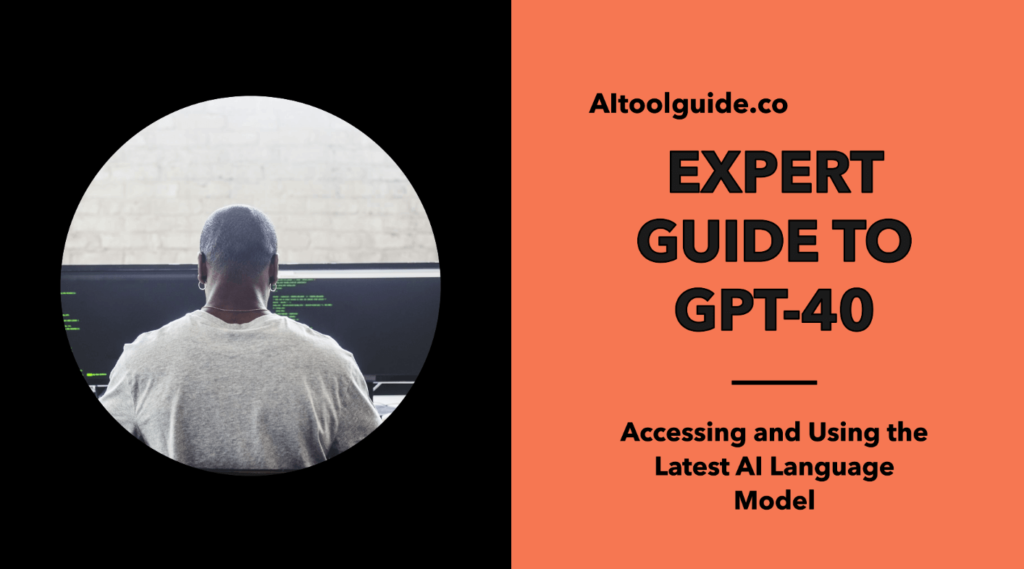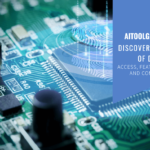As a specialised AI and ChatGPT expert, I’m excited to introduce you to GPT-4o, OpenAI’s latest flagship model that offers enhanced capabilities across text, vision, and audio processing.
To access GPT-4o, simply visit chat.openai.com and create a free account if you haven’t already.
Once logged in, you’ll be greeted with a popup introducing GPT-4o and its limited free access.
Free users can enjoy GPT-4o’s advanced features, including image understanding and web browsing, but with usage limits. When the limit is reached, the system automatically switches to GPT-3.5.
For more extensive use, consider upgrading to ChatGPT Plus or Team subscriptions, which offer higher usage caps and priority access to new features.
API users can also access GPT-4o through the Chat Completions, Assistants, and Batch APIs. Check out this article to learn how to use GPT-4o using the latest Open-AI model in detail.
How to Access GPT-4o?
To access GPT-4o via the OpenAI API, you need to follow a few straightforward steps:
Creating an OpenAI Account
Sign Up: Visit the OpenAI platform website and click on the “Sign Up” button. You can sign up using your email address or through Google, Microsoft, or Apple accounts.
Verify Email: After entering your email and password, you will receive a verification email. Click on the link to verify your email address.
Complete Profile: Fill in your name and, optionally, your organization name. You will also need to provide your phone number for verification.
Payment Setup: To use the API, you need to set up a payment method. The minimum payment requirement is $5 for usage tier 1.
API Access
1. API Key Generation:
Once your account is set up, navigate to the API key page and create a new secret key. Save this key securely as you will need it to authenticate your API requests.
2. API Endpoints:
Chat Completions API: This endpoint supports text and image inputs and outputs text content, including code and JSON. It is used for generating conversational responses.
Assistants API: Allows you to build AI assistants within your applications. It supports tools like code interpreters, file searches, and function calling.
Batch API: Used for sending multiple requests in a single batch, useful for asynchronous jobs.
3. Function Calling and JSON Mode:
The API supports function calling, allowing you to execute specific functions within your application. JSON mode is also supported for structured data inputs and outputs.
Rate Limits and Pricing
Rate Limits: The API has rate limits based on your subscription tier. For instance, higher tiers offer more requests per minute.
Pricing: The cost varies depending on the model and usage. GPT-4o offers different pricing tiers, with lower costs for models like GPT-4o-mini, which is optimized for speed and cost-efficiency.
By following these steps, you can effectively set up and start using the OpenAI API to leverage the powerful capabilities of GPT-4o in your applications.
Accessing GPT-4o Via ChatGPT
Free Tier
Free-tier users can access GPT-4o with certain limitations. By default, they have access to GPT-4o, but when usage caps are reached, they are automatically switched to GPT-4o mini.
This lighter-weight model is designed for everyday tasks but lacks some advanced functionalities. Free users face restrictions on advanced tools such as data analysis, file uploads, web browsing, and vision capabilities, which are not available in the free tier.
Plus and Team Subscriptions
For enhanced access, users can upgrade to ChatGPT Plus or Team subscriptions. These plans offer higher usage caps and priority access to new features.
Plus users can send up to 80 messages every 3 hours on GPT-4o, while Team subscribers enjoy even higher limits.
Steps to Upgrade:
Navigate to Upgrade: Click the “Upgrade to Plus” option at the bottom of the left sidebar on the ChatGPT interface.
Select Plan: Choose the desired subscription plan (Plus or Team).
Payment Information: Fill out the form with your contact and payment details.
Subscribe: Click the “Subscribe” button to complete the process.
Selecting GPT-4o from the Model Selector:
Once subscribed, users can select GPT-4o from the model selector available in the ChatGPT interface. This allows for seamless switching between different models based on specific needs and tasks.
Alternative Free Access
Microsoft Copilot
Microsoft Copilot offers an alternative free access route to GPT-4o through a Microsoft account. Integrated with Bing, Copilot provides a range of functionalities, including AI-powered search and image generation via DALL-E 3.
Users can create intricate designs, abstract concepts, and more by simply describing their needs in text prompts.
This tool is available on multiple platforms, including the web, mobile apps, and within Windows, enhancing productivity and creativity across various applications.
Perplexity.ai
Perplexity.ai is an AI-based search engine that leverages GPT-4 for enhanced search experiences. It allows users to perform advanced searches using powerful AI models.
While it offers a robust free tier, there are limitations on the number of searches. Free users can perform a limited number of searches daily, making it ideal for occasional use.
For more extensive needs, upgrading to Perplexity Pro provides access to more advanced models and increased search limits.
Using GPT-4o Effectively
Providing Clear Instructions
Importance of SpecificityOne of the most crucial aspects of prompt engineering is providing clear and specific instructions.
The more detailed and precise your query, the better the AI can understand and respond accurately. Vague or ambiguous prompts often lead to less relevant or off-target responses.
Techniques:
Detailing Queries: Instead of asking, “What is the weather like?” specify, “What is the weather forecast for New York City on August 10, 2024?” This reduces ambiguity and helps the model provide a more accurate response.
Assuming Personas: When crafting prompts, you can assume a specific persona to guide the AI’s tone and style. For example, “Explain quantum physics as if you were a high school teacher.”
Using Delimiters: Clearly define the boundaries of your query using delimiters like quotation marks or brackets. For instance, “Summarize the following text: [Insert text here].”
Reducing Fabrications with Reference Texts
Incorporating reference texts into your prompts can significantly reduce the likelihood of fabrications or hallucinations by the AI. Reference texts provide a solid foundation for the AI to base its responses on, ensuring higher accuracy and reliability.
Requesting Citations
When asking for information, you can request the AI to provide citations or references. This is particularly useful for research purposes or when verifying the credibility of the information provided. For example, “Provide a summary of the latest research on climate change and include citations.”
Handling Complex Tasks
Breaking Down Tasks
Complex tasks can often overwhelm the AI, leading to incomplete or inaccurate responses. Breaking down these tasks into manageable subtasks can help the AI process the information more effectively.
Techniques:
Intent Classification: Identify and categorize the different intents within a complex query. For example, if you need a detailed report on a topic, break it down into sections like introduction, methodology, results, and conclusion.
Summarizing Long Dialogues: For lengthy conversations or texts, ask the AI to summarize key points first before diving into detailed analysis. For instance, “Summarize the main points of this article before providing a detailed critique.”
Encouraging Thoughtful ProcessingAllowing the AI time to process complex queries can lead to more thoughtful and accurate responses. This involves guiding the AI through its reasoning process.
Techniques:
Explaining Reasoning: Ask the AI to explain its reasoning step-by-step. For example, “Explain how you arrived at this conclusion.”
Guiding Thought Processes: Provide a structured approach for the AI to follow. For instance, “First, identify the main problem, then list possible solutions, and finally, evaluate the pros and cons of each solution.”
Leveraging External Tools
Integrating with Other Tools
Integrating GPT-4o with external tools can enhance its capabilities, allowing it to perform more complex tasks efficiently. This includes text retrieval systems, code execution engines, and more.
Techniques:
Embedding-Based Search: Use embedding-based search techniques to retrieve relevant information from large datasets. For example, “Use embedding-based search to find the most relevant articles on machine learning.”
Precise Calculations: Leverage code execution engines for precise calculations and data analysis. For instance, “Calculate the standard deviation of this dataset using Python code.”
Advanced Features of GPT-4o
Text and Vision Inputs
GPT-4o processes and generates text and images through its advanced multimodal capabilities. It can understand and respond to a combination of text, audio, and image inputs, making interactions more natural and intuitive.
For example, it can analyze images to provide detailed descriptions, generate images based on textual prompts, and engage in voice interactions with human-like response times of around 320 milliseconds.
These capabilities enable various use cases such as analyzing visual data, creating graphic designs, and facilitating interactive storytelling.
Performance and Efficiency
Comparison with GPT-4 Turbo
GPT-4o outperforms GPT-4 Turbo in several aspects. It is twice as fast and 50% cheaper in the API, making it a more cost-effective solution for businesses and developers.
Additionally, GPT-4o offers enhanced vision capabilities, allowing for more accurate image analysis and generation. It also supports over 50 languages, providing improved multilingual support.
This makes GPT-4o suitable for a broader range of applications, from real-time translations to complex data analysis.
Context Window and Knowledge Cut-off
GPT-4o features a significantly expanded context window of 128k tokens, allowing it to maintain context over longer interactions and handle larger datasets more effectively. This is a substantial improvement over previous models, which had smaller context windows.
The knowledge cut-off date for GPT-4o is October 2023, ensuring it is up-to-date with the latest information and developments up to that point.
This combination of a larger context window and recent knowledge base makes GPT-4o a powerful tool for both current and future applications.
Conclusion
accessing and using GPT-4o can be streamlined through various platforms such as the OpenAI API, ChatGPT, Microsoft Copilot, and Perplexity.ai.
By following best practices in prompt engineering, leveraging multimodal capabilities, and understanding its performance metrics, users can maximize the potential of GPT-4o.
Its advanced features, including a 128k context window and up-to-date knowledge base, make it a versatile tool for diverse applications.
We encourage users to experiment with different techniques and tools to fully harness the power of GPT-4o, ensuring more accurate, relevant, and innovative outcomes.
- Guide to Connect Claude AI with Google Sheets in 2024 - October 11, 2024
- What is DreamGF? Honest review by Expert - October 9, 2024
- How to Use Claude AI in 2024? - October 7, 2024






